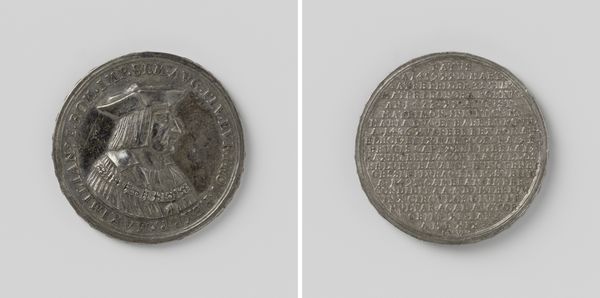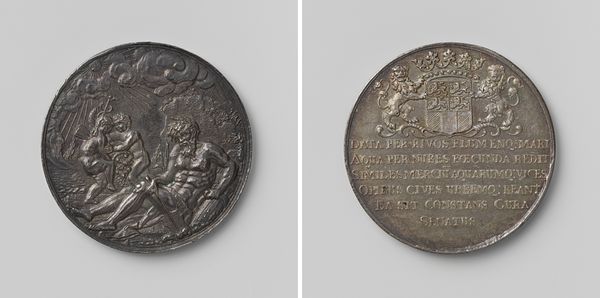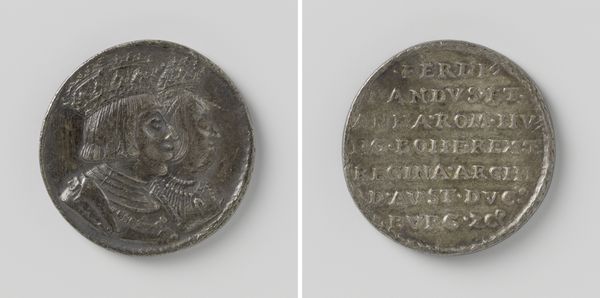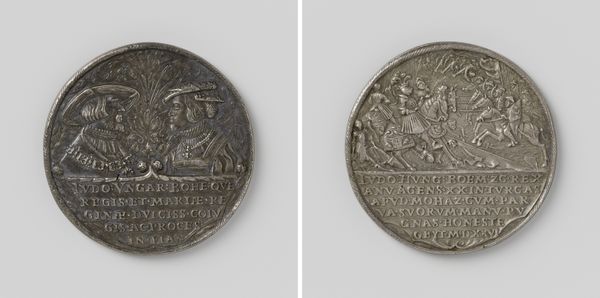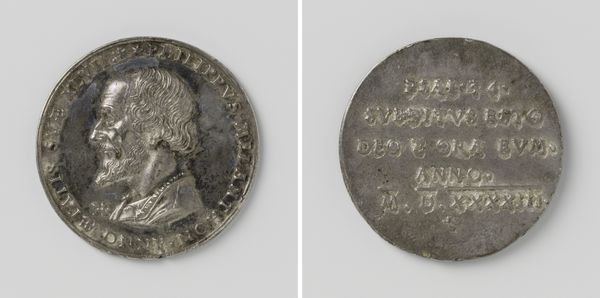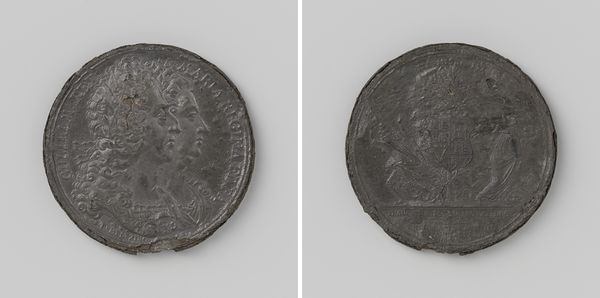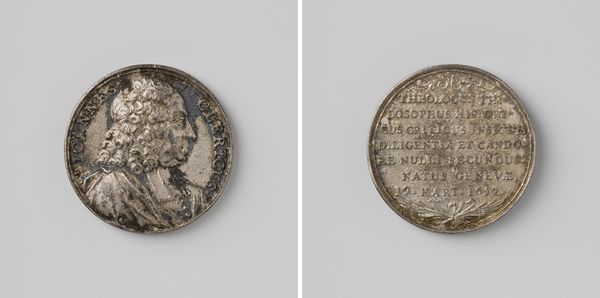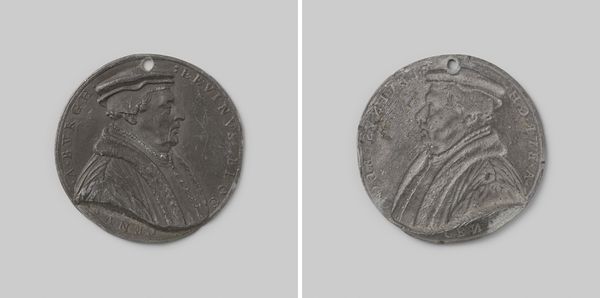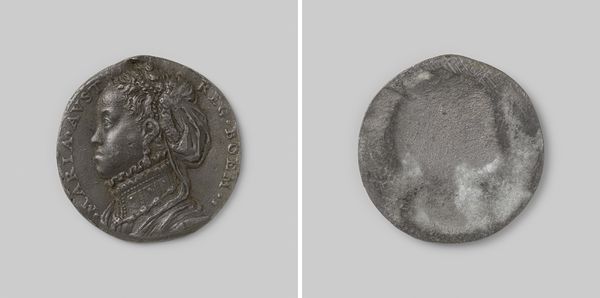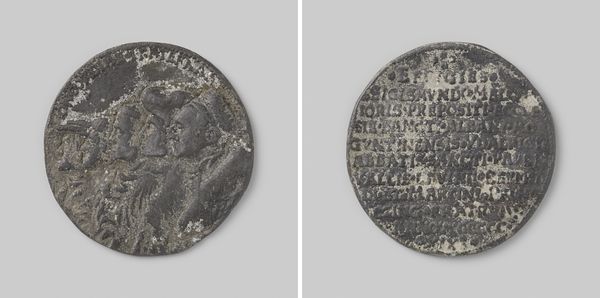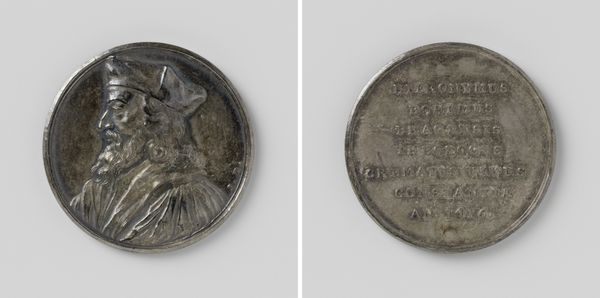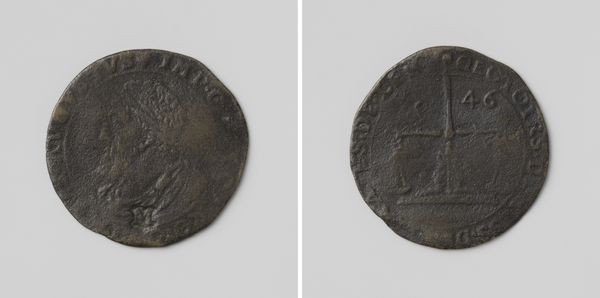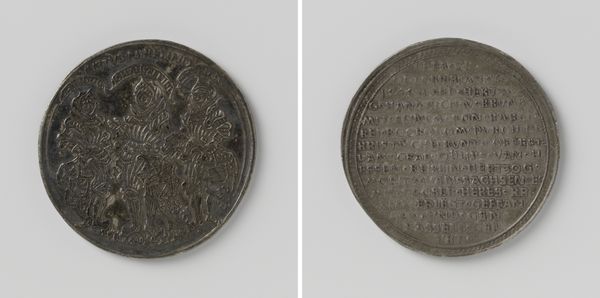
Dimensions: diameter 2.9 cm, weight 8.24 gr
Copyright: Rijks Museum: Open Domain
This silver coin depicting Karel V and Ferdinand I was anonymously struck in 1531. Though small, this object speaks volumes about the self-image of the Habsburg dynasty and the political climate of the 16th century. The double portrait, with its classical style and royal attributes, presents an image of imperial power and dynastic continuity. The Latin inscription on the reverse side is no less significant. As researchers, we can study such inscriptions to gain insights into the ideologies, values, and political strategies of the time. The coin reflects the Habsburgs' ambition to legitimize their rule by associating themselves with the legacy of the Roman Empire, as well as to promote a unified image of their vast territories at a time of growing religious and political fragmentation in Europe. By studying such objects in tandem with other historical sources, we can develop a much richer understanding of the social conditions that shaped artistic production and the public role of art.
Comments
No comments
Be the first to comment and join the conversation on the ultimate creative platform.
